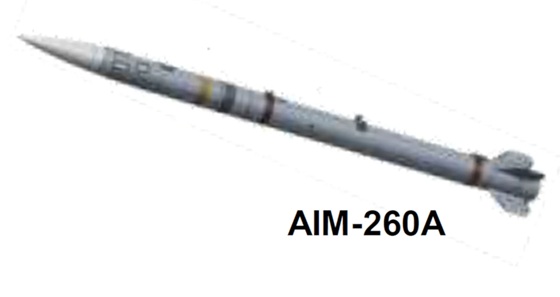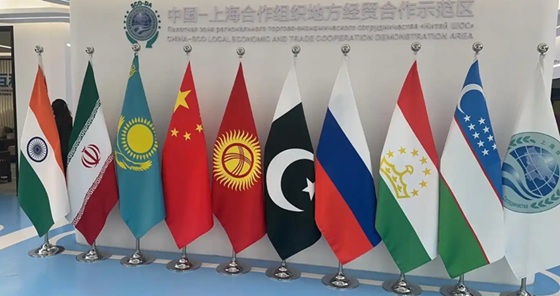In a significant escalation of regional tensions, Pakistan’s use of the Chinese-made PL-15E air-to-air missile in May 2025 to down Indian fighter jets, including advanced French-made Rafale aircraft, has sent shockwaves through global defense circles. This combat debut of the PL-15E, fired from Pakistan’s Chinese-supplied J-10C and JF-17 Block III fighters, marked a pivotal moment in South Asian aerial warfare, highlighting China’s growing influence in advanced weaponry and prompting a rapid U.S. response. The U.S. Air Force and Navy have requested nearly $1 billion for the 2026 fiscal year, starting October 1, 2025, to accelerate production of the Lockheed Martin AIM-260 Joint Advanced Tactical Missile (JATM), a classified system designed to counter emerging threats like the PL-15.
The Incident and Its Implications:
On May 6-7, 2025, intense aerial skirmishes over Kashmir saw Pakistan leverage the PL-15E, an export variant of China’s PL-15 missile, to devastating effect. Reports indicate Pakistan downed at least five Indian aircraft, including three Rafales, a Su-30 MKI, and a MiG-29. The PL-15E, with a range of approximately 145 kilometers (90 miles) compared to the domestic PL-15’s 200-300 kilometers, features an active electronically scanned array (AESA) radar seeker, dual-pulse solid rocket motor, and advanced guidance systems, including inertial navigation and mid-course datalink updates. Its ability to engage targets at long range, coupled with Pakistan’s networked approach using Saab 2000 airborne early warning and control (AEW&C) aircraft, gave it a decisive edge over India’s mixed fleet of Russian, French, and indigenous systems.
The PL-15E’s combat success exposed vulnerabilities in India’s air force, particularly the Rafale’s lack of radar stealth and electronic warfare capabilities compared to modern Chinese systems. Analysts note that Pakistan’s integration of Chinese J-10C fighters, equipped with AESA radar and PL-15 missiles, alongside AEW&C platforms, allowed for stealthy, long-range engagements that outmaneuvered India’s defenses. This clash not only humiliated India’s air force but also raised concerns about the effectiveness of Western-supplied equipment, such as the Rafale, against Chinese technology.
U.S. Response and the AIM-260:
The U.S. Air Force and Navy’s $1 billion funding request for the AIM-260 reflects a strategic pivot to counter the PL-15’s demonstrated capabilities. After eight years of development, the AIM-260, designed to replace the AIM-120 AMRAAM, is poised to become the U.S.’s next-generation air-to-air missile. The Air Force, leading the project, has allocated $368 million for initial production and $300 million for additional development, signaling urgency in deploying a weapon capable of matching or surpassing the PL-15’s range and technological sophistication. The AIM-260 is believed to feature advanced radar homing, enhanced resistance to countermeasures, and a range potentially exceeding that of the AIM-120D, which the PL-15 was designed to rival.
This funding surge comes amid broader U.S. concerns about China’s military advancements and its proliferation of advanced weaponry to allies like Pakistan. The PL-15’s combat debut has underscored the need for the U.S. to maintain air superiority in potential future conflicts, particularly in the Indo-Pacific, where Chinese systems like the J-20 stealth fighter and PL-15 could pose significant threats.
Geopolitical and Strategic Context
The India-Pakistan clash, intensified by China’s technological backing, has reshaped South Asian security dynamics. Pakistan’s reliance on Chinese arms—63% of China’s $8.2 billion arms exports from 2015 to 2024 went to Pakistan—has bolstered its air defenses and offensive capabilities, narrowing the gap with India’s larger but less integrated forces. India’s S-400 systems and Rafale jets, armed with MBDA Meteor missiles, were outmatched in this instance, raising questions about their interoperability and effectiveness against modern Chinese systems.
The U.S. funding for the AIM-260 also signals a broader competition with China in the global arms race. The PL-15’s success has boosted China’s reputation as a military technology provider, challenging Western dominance. Meanwhile, U.S. sanctions on Pakistan’s ballistic missile program, including its National Development Complex, highlight tensions over Pakistan’s expanding capabilities, potentially pushing Islamabad closer to Beijing.
Critical Analysis
While the PL-15E’s combat performance is a alarming for the west. The Rafale’s losses may stem from tactical errors, pilot training gaps, or India’s lack of robust electronic warfare systems rather than the outright inferiority of Western technology. The AIM-260’s development, while reactive, positions the U.S. to regain technological parity, but its classified nature limits public insight into its capabilities. Additionally, Pakistan’s missile successes rely heavily on Chinese integration, which may not be easily replicable in other theaters. The U.S. must balance its response to avoid escalating tensions with Pakistan while addressing China’s growing influence.
Conclusion
Pakistan’s use of Chinese PL-15E missiles to down Indian fighters has catalyzed a $1 billion U.S. push to deploy the AIM-260, underscoring a new era of long-range aerial combat and intensifying the U.S.-China technological rivalry.
As South Asia remains a flashpoint, the global arms race accelerates, with implications for regional stability and beyond.
Discover more from Defence Talks | Defense News Hub, Military Updates, Security Insights
Subscribe to get the latest posts sent to your email.





